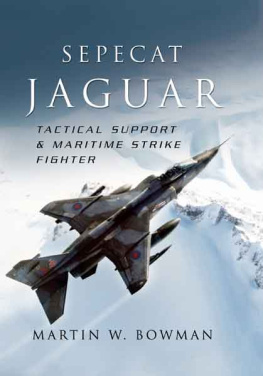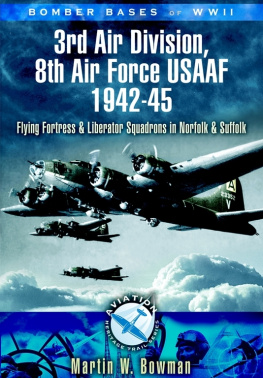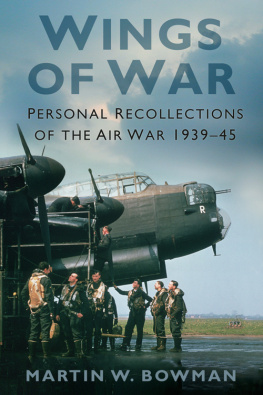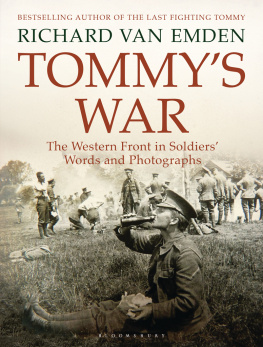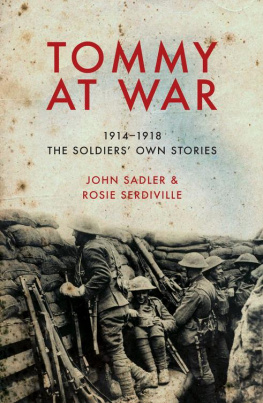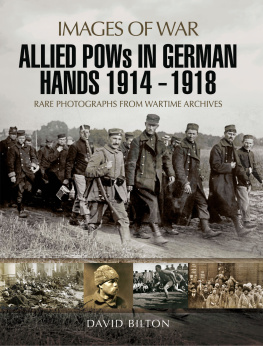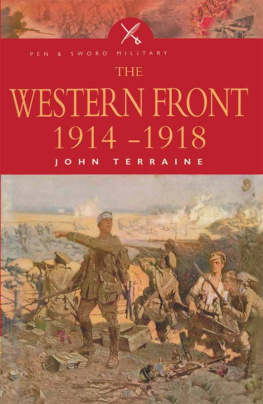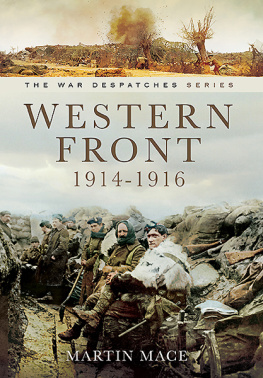Because these wings are no longer wings to fly
But merely vans to beat the air
The air which is now thoroughly small and dry
Smaller and dryer than the will
Teach us to care and not to care
Teach us to sit still
Ash Wednesday, T. S. Eliott
First Published in Great Britain in 2014 by
Pen & Sword Aviation
an imprint of
Pen & Sword Books Ltd
47 Church Street, Barnsley, South Yorkshire S70 2AS
Copyright Martin W Bowman, 2014
ISBN 9781783831951
The right of Martin W Bowman to be identified as author of this work
has been asserted by him in accordance with the Copyright,
Designs and Patents Act 1988.
A CIP catalogue record for this book is
available from the British Library.
All rights reserved. No part of this book may be reproduced or transmitted in
any form or by any means, electronic or mechanical including photocopying,
recording or by any information storage and retrieval system, without
permission from the Publisher in writing.
Typeset in 10/12pt Palatino
by GMS Enterprises
Printed and bound in England by
CPI Group (UK) Ltd, Croydon, CR0 4YY
Pen & Sword Books Ltd incorporates the Imprints of Pen & Sword
Aviation, Pen & Sword Family History, Pen & Sword Maritime, Pen & Sword
Military, Pen & Sword Discovery, Wharncliffe Local History, Wharncliffe
True Crime, Wharncliffe Transport, Pen & Sword Select, Pen & Sword
Military Classics, Leo Cooper, The Praetorian Press, Remember When,
Seaforth Publishing and Frontline Publishing.
For a complete list of Pen & Sword titles please contact
PEN & SWORD BOOKS LIMITED
47 Church Street, Barnsley, South Yorkshire, S70 2AS, England
E-mail:
Website: www.pen-and-sword.co.uk
Contents
Acknowledgements
I am indebted to all the contributors for their words and photographs. Thanks also go to my fellow author, friend and colleague, Graham Simons, for getting the book to press ready standard and for his detailed work on the photographs; to Pen & Sword and in particular, Laura Hirst; and Jon Wilkinson, for his unique jacket design once again. Equally, I am most grateful to Anna Malinovska & Mauriel Joslyn for their kind permission in allowing me to quote from their book Voices In Flight: Conversations with Air Veterans of the Great War (Pen & Sword Aviation 2006) and to Terry Treadwell for his permission to quote his research into the USAS airmen. Also, to RAF Flying Review, Nigel McTeer; The Norfolk & Suffolk Aviation Museum, the Shuttleworth Trust; and the Second Air Division Memorial Library, Norwich.
The Reverend R.A. Bignold, the rector of Carlton Colville, writing to his parishioners in 1916, said: It is incumbent upon us to redouble our efforts for provision of food for British prisoners in Germany; that, whereas at the outset we were admittedly sending comforts supplementary to the ration provided by the German government, the nutritive value of the ration has now become so poor, that we must recognise that our prisoners are dependent upon us for saving them from virtual starvation.
Ralph Mottram produced one of the most evocative novels about the First World War, The Spanish Farm. His letters and diaries also give a clear picture of life at the front. Here he describes a raid on the enemy trenches in January 1916: Bombing Patrols Southwest Of St Eloi. The main object of these patrols was to secure the identification of the troops opposed to them. The patrols, which in each case were composed of two officers and about fifteen men, left soon after 6 pm and were back again by 8 pm, this period being selected owing to the brightness of the moon an hour later. Both patrols succeeded in cutting through the enemy's wire system and reached the parapet unobserved. The left patrol was discovered at that point and the trench proving to be strongly held, the patrol was able to do no more than throw bombs, it is believed with considerable effect. Unfortunately both the officers with this patrol were wounded, the first slightly by a stray bullet when still close to our own lines and the second as soon as the patrol was discovered. The patrol suffered no other casualties and it is certain that several of the bombs they threw fell into crowded trenches and detonated there. The right patrol reached the enemy's parapet undiscovered and the two officers and a sergeant crossed the enemy's trench and crawled along behind the parados to a spot where a sentry was keeping watch at the junction of a small sap running out to a bombing post held by two bombers. They climbed into the trench and surprised the sentry but unfortunately the revolver which was held at his head missed fire. Attempts were made to throttle him quietly but he succeeded in raising the alarm and had to be killed. Had the pistol gone off, it is almost certain that the alarm would not have been raised, as there was no one within the immediate vicinity with the exception of the two bombers 30 yards in front of the trench.
As soon as the alarm was raised Germans came up from all sides and the patrol was forced to retreat. Before doing so they bombed the enemy successfully and killed some, including the two bombers at the head of the sap. The depth of the trench prevented them from getting the dead man out and so no identification was secured. This patrol had one casualty. At the point where the front trench was penetrated, it was a winding trench with no traverses, 8 feet deep, 6 feet broad at the bottom, the parapet steep and revetted with wood, the parados a bare earth slope and the bottom 3 greasy planks laid parallel to each other lengthwise along the trench. No signs of any gas apparatus were discernible. The left patrol discovered a loose bomb hung to a knife rest, presumably as an additional safeguard. Nearer still to the trench there was a deep ditch full of water and submerged wire. The right patrol whilst reconnoitring their ground close to the enemys trench, heard the two bombers previously referred to ring a small bell which was the signal for a Very light to be sent up from the trench behind them.
Lieutenant R.F.W. Sheraton with 59 Squadron, Royal Flying Corps gave this account of Active Service in 1917 in France.
To me 59 Squadron will always be the Squadron. The circumstances which seemed to draw me towards it were rather curious. Whilst serving as a Subaltern with the Somerset Light Infantry at Arras in the early part of 1917, my Company Commander, Captain Hobhouse, who had gone down with measles (I think it was), was in hospital for a few days and the next bed to him in the ward was occupied by a pilot of 59 Squadron, Royal Flying Corps - a Lieutenant Tanfield. I had expressed to Hobhouse that I was keen to get transferred to the RFC and Hobhouse mentioned this to Tanfield, who said that his Squadron, which was then stationed at Bellevue, near Arras, would be pleased to take me up if I cared to visit the Squadron. This I did on the first occasion, when my Battalion was in rest. On the occasion that I visited the Squadron I met Tanfield, with other Officers, but Tanfield was unable to take me up since his machine was under repair. I was therefore given a flight by a Lieutenant Davies. (Davies observer later was, I believe, the Canadian Sam Houston, both of whom left 59 Squadron about August 1917). I heard afterwards that Davies was killed in action.
I returned from my first flight more keen than ever to get into the air. Later, when my transfer came through and I landed in France, I asked the RFC Officer at base to pass me to 59 Squadron and although he was unable to do this, he did the next best thing and sent me to the Wing of which 59 Squadron formed a part. When I arrived at Doullens and was sent for there by the Squadron tender, I was very glad to learn that this had come from 59 Squadron. At the same time I was very unhappy to learn from the driver that 59 Squadron had just previously lost a complete flight of six machines to Richtofens Circus and that Tanfield was one of those who had been lost.



